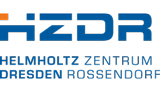Introduction
Focused ion beams (FIB) are promising tools in micro- and nanotechnology as well as in material analytics. Characteristic properties are the Nanometer spot size, the energy range from some eV up to 200 keV, the high current density and a broad spectrum of ion species. In commercial FIB systems Ga liquid metal ion sources (LMIS) are usually employed, but in some rare cases also liquid metal alloy ion sources (LMAIS) are used. FIB systems allow to create structures of arbitrary shape with dimensions on the nm scale.
Loading of liquid metal alloy ion source emitter with liquid Gold-Silicon alloy.
Emission test of a gold-silicon liquid metal alloy ion source
Production
Periodic table of elements with elements available in a FIB
The ion fine beam laboratory in the institute has equipment and extensive experience for the development and production of liquid metal hairpin-type ion sources for different source materials like :
Au73Ge27, Au82Si18, Ce80C20, Co36Nd64, Er69Ni31, Sn74Pb26, In14Ga86, Ga38Bi62, Ga35Bi60Li5 as well as new sources on demand ...
Test und characterization
The following parameters are determined for the test and characterisation of the sources:
- current-voltage characteristics, emission stability, lifetime and emitter-temperature behaviour, long-term stability.
- Mass spectra
- Angular distribution and angular intensity by means of a rotating Faraday cylinder
- Ion energy distribution as well as energy shift of each emitted component of the source through a mass filter and a retarding field energy analyzer
Instrumentation
- TIBUSSII - Orsay Physics NanoSpace system equiped with a 5 nm SEM, a 7 nm mass-separated Liquid Metal Alloy Ion Source FIB and a 17 nm mass-separated Plasma FIB
- 2x Orsay Physics CANION Z31Mplus mass-separated FIBs (semi-kommerziell), which can provide various ion species using in-house developed ion sources, for dedicated research Topics
- Carl Zeiss NVision 40 CrossBeam Ga-FIB for standard applications like ion beam lithography or TEM lamella preparation
- Carl Zeiss ORION NanoFab, 2x Carl Zeiss ORION Plus Helium Ion Microscope He/Ne-FIB
- Hitachi Ion Milling System ArBlade 5000 for sample crosssectioning, 500µA of 10 keV Ar, sputtering of > 1 mm / h
- Leica EM TXP Target Surfacing System for target preparation like milling, sawing, grinding, and polishing of samples with an integrated stereomicroscope
Current projects
Gallium Oxide Fabrication with Ion Beams GoFIB (05/2022 – 05/2025)
GoFIB (Reference Number: project9659), press release
Gallium oxide is a novel ultra-wide band gap material, and the rationale is that its thin film fabrication technology is immature. In particular, the metastability conditions are difficult to control during sequential deposition of different polymorphs with existing techniques. However, the polymorphism may turn into a significant advantage if one can gain control over the polymorph multilayer and nanostructure design. Our objective is to develop a method for the controllable solid state polymorph conversion of gallium oxide assisted by ion irradiation, capitalizing on encouraging preliminary data. This fabrication method may pave the way for several potential applications (e.g. in power electronics, optoelectronics, thermoelectricity, batteries) and we will test the corresponding functionalities during the project. Thus, we envisage multiple positive impacts and potential benefits across a wide range of stakeholders.
Former Projects
All publications
Recent publications
2023
Roadmap for focused ion beam technologies
K. Höflich, G. Hobler, F. I. Allen, T. Wirtz, G. Rius, A. Krasheninnikov, M. Schmidt, I. Utke, N. Klingner, M. Osenberg, L. McElwee-White, R. Córdoba, F. Djurabekova, I. Manke, P. Moll, M. Manoccio, J. M. de Teresa, L. Bischoff, J. Michler, O. de Castro, A. Delobbe, P. Dunne, O. V. Dobrovolskiy, N. Freese, A. Gölzhäuser, P. Mazarov, D. Koelle, W. Möller, F. Pérez-Murano, P. Philipp, F. Vollnhals, G. Hlawacek
Involved research facilities
- Ion Beam Center DOI: 10.17815/jlsrf-3-159
Related publications
- DOI: 10.17815/jlsrf-3-159 is cited by this (Id 37049) publication
-
 Applied Physics Reviews 10(2023)4, 041311
Applied Physics Reviews 10(2023)4, 041311
arXiv: 2305.19631
Cited 4 times in Scopus -
Poster
Eu-F-N workshop, 07.-09.06.2023, Zürich, Schweiz -
Poster
FIT4NANO workshop, 17.-19.07.2023, Lisbon, Portugal -
Poster
AVS69, 05.-10.11.2023, Portland, USA
Universal radiation tolerant semiconductor
A. Azarov, J. G. Fernández, J. Zhao, F. Djurabekova, H. He, R. He, Ø. Prytz, L. Vines, U. Bektas, P. Chekhonin, N. Klingner, G. Hlawacek, A. Kuznetsov
Involved research facilities
- Ion Beam Center DOI: 10.17815/jlsrf-3-159
Related publications
- DOI: 10.17815/jlsrf-3-159 is cited by this (Id 36900) publication
-
Data publication: Universal radiation tolerant semiconductor
ROBIS: 37095 HZDR-primary research data are used by this (Id 36900) publication
-
 Nature Communications 14(2023), 4855
Nature Communications 14(2023), 4855
arXiv: 2303.13114
Cited 12 times in Scopus
Downloads
Direct magnetic manipulation of a permalloy nanostructure by a focused cobalt ion beam
J. Pablo-Navarro, N. Klingner, G. Hlawacek, A. Kakay, L. Bischoff, R. Narkovic, P. Mazarov, R. Hübner, F. Meyer, W. Pilz, J. Lindner, K. Lenz
Involved research facilities
- Ion Beam Center DOI: 10.17815/jlsrf-3-159
Related publications
- DOI: 10.17815/jlsrf-3-159 is cited by this (Id 36822) publication
Downloads
- Secondary publication expected from 26.10.2024
2022
Wafer-scale nanofabrication of telecom single-photon emitters in silicon
M. Hollenbach, N. Klingner, N. Jagtap, L. Bischoff, C. Fowley, U. Kentsch, G. Hlawacek, A. Erbe, N. V. Abrosimov, M. Helm, Y. Berencen, G. Astakhov
Involved research facilities
- Ion Beam Center DOI: 10.17815/jlsrf-3-159
Related publications
-
Ion-induced telecom single-photon emitters in silicon
ROBIS: 37394 cites this (Id 35071) publication -
Ion-induced telecom single-photon emitters in silicon
DOI: 10.17815/jlsrf-3-159 is cited by this (Id 35071) publication
Differential evolution optimization of Rutherford back-scattering spectra
R. Heller, N. Klingner, N. Claessens, C. Merckling, J. Meersschaut
Involved research facilities
- Ion Beam Center DOI: 10.17815/jlsrf-3-159
Related publications
- DOI: 10.17815/jlsrf-3-159 is cited by this (Id 34563) publication
-
Syntetic Spectra Data used in publication "Differential evolution optimization …
ROBIS: 34545 HZDR-primary research data are used by this (Id 34563) publication
Epitaxial lateral overgrowth of tin spheres driven and directly observed by helium ion microscopy
N. Klingner, K.-H. Heinig, D. Tucholski, W. Möller, R. Hübner, L. Bischoff, G. Hlawacek, S. Facsko
Involved research facilities
- Ion Beam Center DOI: 10.17815/jlsrf-3-159
Related publications
- DOI: 10.17815/jlsrf-3-159 is cited by this (Id 34525) publication
-
Data publication: Epitaxial lateral overgrowth of tin spheres driven and …
ROBIS: 34526 HZDR-primary research data are used by this (Id 34525) publication
Downloads
- Final Draft PDF 12,1 MB Secondary publication
Laser-induced ionization with liquid metal ion sources and two-color sculpted laser fields
F. Machalett, B. Ying, P. Wustelt, L. Bischoff, N. Klingner, W. Pilz, M. Kübel, A. M. Sayler, T. Stöhlker, G. G. Paulus
Involved research facilities
- Ion Beam Center DOI: 10.17815/jlsrf-3-159
Related publications
- DOI: 10.17815/jlsrf-3-159 is cited by this (Id 34427) publication
-
Contribution to external collection
in: Jahresbericht Helmholtz-Institut Jena 2021, Jena: Helmholtz-Institut Jena, Fröbelstieg, 2022, 60-60
Sustainable Bioengineering of Gold Structured Wide-Area Supported Catalysts for Hand-Recyclable Ultra-Efficient Heterogeneous Catalysis
C. S. Bhatt, D. S. Parimi, T. K. Bollu, H. U. Madhura, N. Jacob, R. Korivi, S. S. Ponugoti, S. Mannathan, S. Ojha, N. Klingner, M. Motapothula, A. K. Suresh
Involved research facilities
- Ion Beam Center DOI: 10.17815/jlsrf-3-159
Related publications
- DOI: 10.17815/jlsrf-3-159 is cited by this (Id 34270) publication
Dysprosium Liquid Metal Alloy Ion Source For Magnetic Nanostructures
L. Bischoff, N. Klingner, P. Mazarov, K. Lenz, R. Narkovic, W. Pilz, F. Meyer
Involved research facilities
- Ion Beam Center DOI: 10.17815/jlsrf-3-159
Related publications
- DOI: 10.17815/jlsrf-3-159 is cited by this (Id 34127) publication
Quantitative nanoscale imaging using transmission He ion channelling contrast: Proof-of-concept and application to study isolated crystalline defects
S. Tabean, M. Mousley, C. Pauly, O. de Castro, E. Serralta Hurtado De Menezes, N. Klingner, G. Hlawacek, T. Wirtz, S. Eswara
Involved research facilities
- Ion Beam Center DOI: 10.17815/jlsrf-3-159
Related publications
- DOI: 10.17815/jlsrf-3-159 is cited by this (Id 32753) publication

